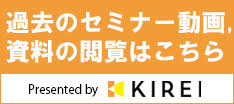老化に伴う慢性疼痛
総説
老化に伴う慢性疼痛
佐藤 茂,太田 裕貴,劉 效蘭
WAARM Journal, 2019; 2: 19–33
Key words: 老化,慢性疼痛,うつ病,認知症,ミクログリア
Abstract
Recent data from the Japan Internal Affairs and Communications Ministry shows that the number of elderly people aged 65 or older accounts for 28.1 percent of the total population, a world record. Chronic pain is perceived as an agerelated condition, and is linked to restriction in mobility and daily activity or reduced quality of life. Elderly patients exhibit a higher incidence of musculoskeletal and neuropathic pain conditions. Chronic pain and depression are also highly prevalent in elderly population. The purpose of this review is not only an overview of chronic pain in elderly people, but also to discuss microglial disease or chronic pain treatment.
はじめに
地球上の総人口に対して60歳以上を占める割合 は12.3%(2015年), 2050年には21.5%に増加する と予測されている1).日本では2017年に65歳以上 は27.7%であるが,2040年には35.3%になると予 測されて,20年後には3人に1人が65歳以上とな る2).増加する高齢者に対する医療,介護,年金, 生活など多くの問題を解決しなければならない.そ の一つとして生活の質(Quality of Life, QOL)の低 下が問題となっている.老化により増加する慢性疼 痛がQOLと密接に関係しているとの多くの報告が ある3-10). 慢性疼痛chronic painによるうつ病depressionお よび認知症dementiaの発症が知られている11-13).こ の事は慢性疼痛が原因となり,正常な社会生活が出 来なくなることを示している.そこで,老化に伴う慢性疼痛の現状や原因,あるいは慢性疼痛とうつ病 や認知症の関係性について検討し,最後に高齢者の 為の慢性疼痛の治療について述べる










